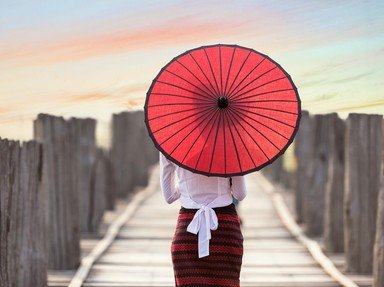Quiz Answer Key and Fun Facts
1. The Hmong people originated in China in the fertile Yellow River valley. In the nineteenth century, they emigrated south to the country with which they would become synonymous. What is this place?
2. The Hmong sided with the Communists in the 1960s during the Vietnam War that ravaged Laos.
3. Toward the end of the Vietnam War, Communist armies began retaliating against the Hmong for siding with America. Many Hmong families resettled in the United States. What metropolitan area has the highest population of Hmong?
4. The Hmong are organized into clans. Currently there 18 clans in their culture and membership is inherited upon birth. These clans are exogamous. What does that mean?
5. When people refer to White Hmong and Green Hmong, to what are they alluding?
6. A fairly large percentage of the Hmong people in America identify themselves as Christians. However, many still practice the traditional religion of the culture. What is that?
7. The Hmong cuisine is characterized by the usage of many spices and herbs. The staple food is white rice which is used in simple soups, a large variety of vegetables, and peppers. The Hmong are also known for a food called Naab Vaam. What is this?
8. The Hmong celebrate the Hmong New Year festival in November and December (traditionally the end of harvest season). It is a time to celebrate and welcome back, and honor, spirits. Special meals are prepared. How long does this "in house" ritual take place?
9. True or False: Hmong traditional clothing is known for its intricate and embellished embroidery work.
10. When, unfortunately, a loved one dies in the Hmong culture, what is the traditional practice?
Source: Author
stephgm67
This quiz was reviewed by FunTrivia editor
stedman before going online.
Any errors found in FunTrivia content are routinely corrected through our feedback system.
